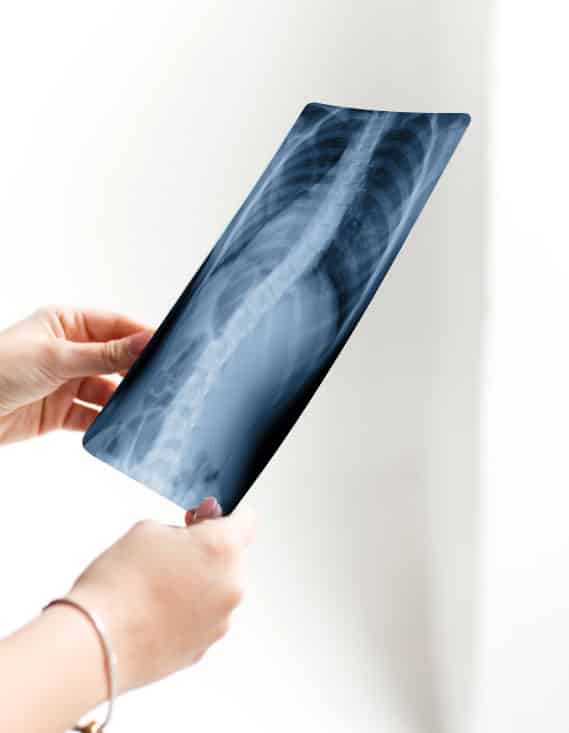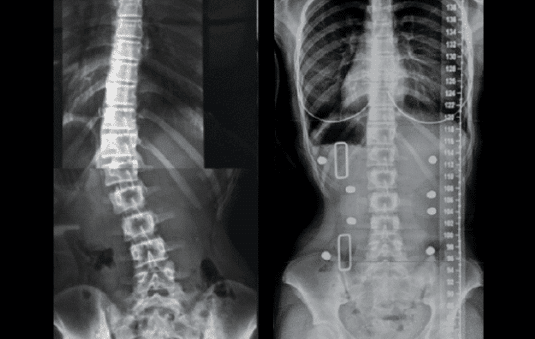Scoliosis Bracing

For decades, scoliosis bracing has served as an early, non-surgical treatment for scoliosis. Over the years though, the way that scoliosis braces are designed and manufactured has evolved.
Traditional Scoliosis Braces
Most hospital designed and traditional fitted braces are called TLSOs. TLSO stands for Thoraco-Lumbar-Sacral-Orthosis and is the generic descriptive name for the common thermoplastic hard braces used in the treatment of scoliosis. There are many variations of TLSO braces available.
Essentially traditional braces treat the spine like a fracture using three-point pressure to immobilize the area. This is the underlying theory behind most traditional scoliosis braces, such as the Boston Brace, and has shown moderate success in stopping scoliosis curves worsening and needing surgery#*.
Research supports the value of brace treatment. The biggest ever randomized control trial done on traditional scoliosis braces, the BRAIST Study*, reported a 72% success rate for bracing compared to no brace treatment. There was also a significant positive association between hours of brace wear and rate of treatment success.
#Thompson, G. H. (2007). A Comparison of the Thoracolumbosacral Orthoses and Providence Orthosis in the Treatment of Adolescent Idiopathic Scoliosis. J Pediatr Orthop, 27, 369Y374.
*Weinstein, S. L., Dolan, L. A., Wright, J. G., & Dobbs, M. B. (2013). Design of the bracing in adolescent idiopathic scoliosis trial (BrAIST). Spine, 38(21), 1832.
Custom Designed Scoliosis Braces
More recently, after years of research into the effect of mirror image rehabilitation, 3D designed and manufactured scoliosis braces have been developed. This approach considers the patient’s postural alignment and the scoliosis deformity in three dimensions.
Based on this 3D assessment, computer-assisted design and manufacturing processes are used to produce a brace that attempts to correct the patient’s postural and spinal deformity in all three planes.

Questions about Bracing?
Using a structured light scanner that attaches to an iPad, the BraceScan software allows our clinicians to capture full 3D body scans of a patient in any position. The software removes many of the inaccuracies of traditional bracing, and accurately captures the important patient data.
These 3D scans, digital X-rays, posture photos and other clinical information are then used to design a 3D custom brace which aims to harness spinal coupling, not 3 point pressure, and individualise the correction to help with alignment of the spine and body posture.
The unique approach means that no two braces are the same just as no two curves are the same.
Personalised: Specially created for the patient after a comprehensive scoliosis assessment, each brace is 3D custom designed and made with the latest in 3D scanning technology and computer aided design and manufacture (CAD CAM)
Corrective: In most cases, the ScoliBrace uses an over-corrective approach to guide the body into a posture that is the opposite of the way the scoliosis has positioned it. The over-corrective approach and asymmetrical design harnesses spinal coupling, not 3 point pressure, to aim for the best possible results.
Patient Friendly: The brace opens and closes at the front making it easy to wear and remove without assistance. There are a variety of unique colors and patterns available for patients to personalise the look of their brace.
Types of Bracing Treatment
Success Stories
from our Clinics
We’d like to thank our patients for their permission to use their images and results in our case studies. These studies are not to be reproduced without written permission from ScoliCare.
